The 10 Best FPS Games of the Last 10 Years
March 15, 2019 | 10:00
Companies: #4a-games #bethesda #david-szymanski #deep-silver #ea #epic #id-software #machinegames #new-blood-interactive #people-can-fly #respawn-entertainment #superhot-team #techland #ubisoft
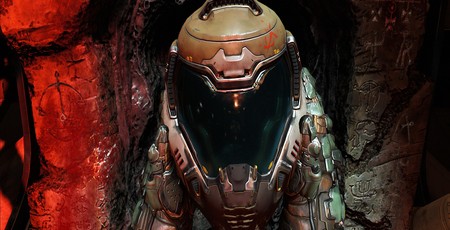
It’s often argued that the golden age of shooters is over, that the genre which began (more or less) with Wolfenstein 3D and became dominant with Doom has seen its best years and best games made.
It’s certainly true that the FPS is no longer the dominant mainstream genre, but that’s not to say that the games industry doesn’t still make incredible shooters. Indeed, to celebrate the genre’s more recent achievements, we’ve brought together the best examples of blasting bad dudes with big guns developed in the last decade.
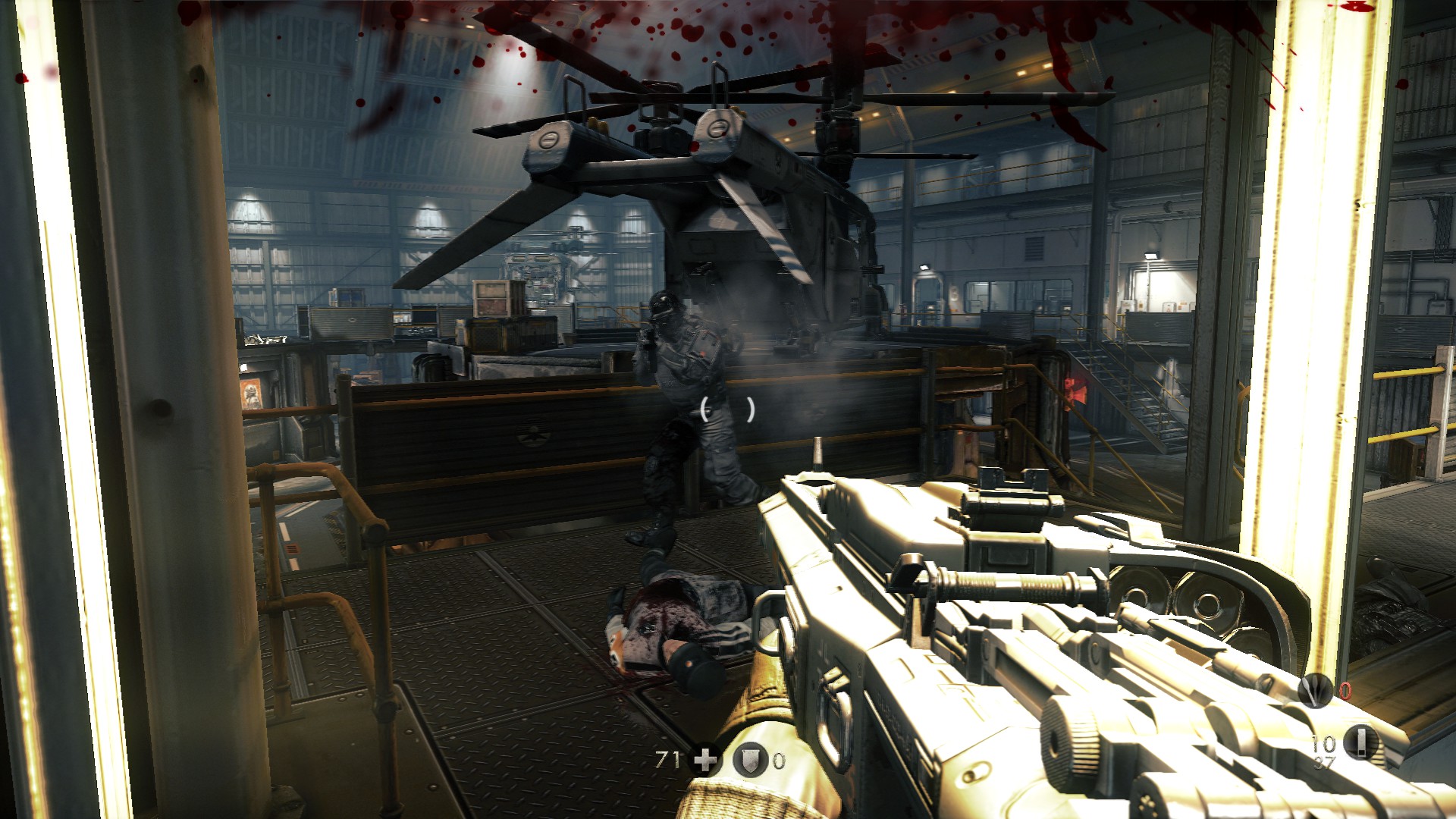
10. Wolfenstein: The New Order
Shooters and storytelling aren’t always the best of friends. Even a well-told story can potentially derail the flow and blistering action that a truly great FPS needs. This goes doubly when the shooter in question is descended from the legendary Wolfenstein 3D, programmed by John “A story in a game is like a story in a porn movie” Carmack.
This is why developer MachineGames deserves so much credit. Not only has it managed to create a compelling story of resistance and pen the square-jawed B.J. Blaskowicz as a believable human (with the wateriest eyes in gaming), but in the process it never forgot what Wolfenstein is fundamentally about, namely blowing away large numbers of Nazis with ridiculously OTT weaponry.
The New Order also uses its pulpy dystopian past to fantastic effect. Highlights of the campaign include an incredible gunfight on a slowly collapsing bridge, and pew-pew-ing your way through a Nazi Moon base with a laser rifle. It isn’t a perfectly balanced shooter, with the narrative cutting into the action a little too frequently (a problem that was much more prominent in the sequel), but that doesn’t stop The New Order from being comfortably the best Wolfenstein Game since 1991.
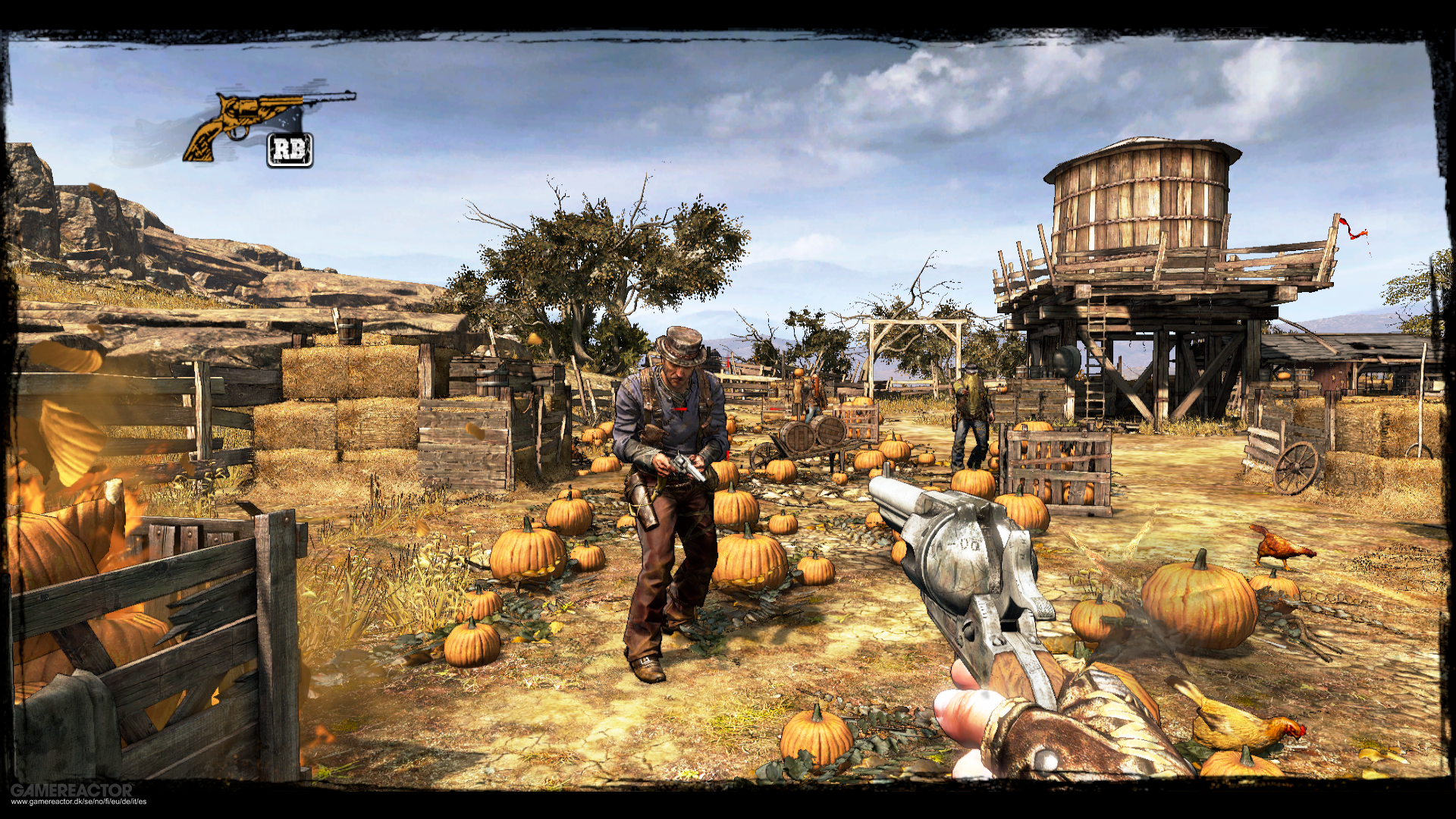
9. Call of Juarez: Gunslinger
Speaking of storytelling, it’s a crying shame that Call of Juarez: Gunslinger has been largely forgotten about. Gunslinger is arguably the most narratively fascinating FPS made in the last ten years. It places you in the spurred boots of Silas Greaves, a veteran bounty hunter who whiles away his time telling tales of his exploits in the local saloon. Greaves claims to have fought and bested the most famous outlaws of the Wild West, including Wild Bill Hickok and the notorious Jesse James.
You experience Greaves’ adventures as playable flashbacks. But there’s a question over how tall Greaves’ tales really are. In a mechanic similar to The Stanley Parable, Silas will set up a scenario that implies the player is to perform a certain action, but it’s up to you whether to follow his thread or deviate from it. If the player chooses the latter, Silas quickly adjusts the story to fit the new narrative, making his claims seem more than a little suspect.
For its clever use of an unreliable narrator alone, Gunslinger is worth checking out. But it also happens to be a rootin’ tootin’ shooter as well, featuring powerful period weapons and a neat duelling mechanic which simulates those classic high-noon quick-draws. For all this and more, Gunslinger deserves to be far more infamous than it is.
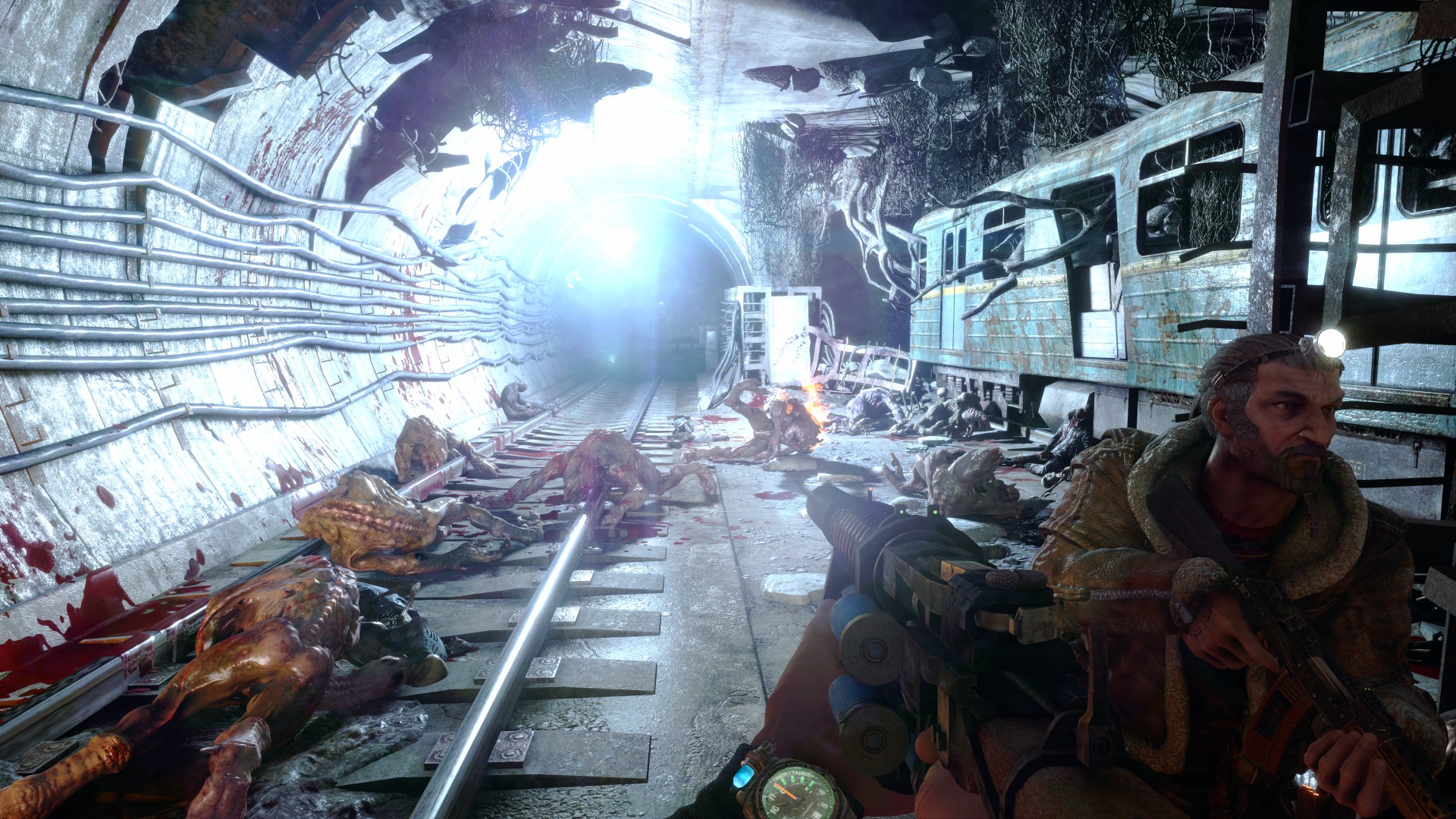
8. Metro 2033: Redux
Any of the Metro Games could happily occupy a place in this list. Last Light is a splendid sequel that iterates upon the original in some clever ways, while Exodus brilliantly expands Metro’s survivalist shooting into larger, more open environments.
For the definitive Metro experience, however, you have to go back to the original. Or at least the remastered version of the original. Released in 2014, Metro Redux retains all that was great about Metro: its claustrophobic environments, its terrifying close-quarters battles against hordes of mutants, the wonderful, wonderful gas-mask. But it also makes substantial enhancements to the game’s visuals, refines the original’s wonky stealth mechanics, and also rejigs the levels so they flow more seamlessly into one another.
The result is one of the most atmospheric shooters on PC that blends haunting environmental storytelling with weighty and spectacular firefights.
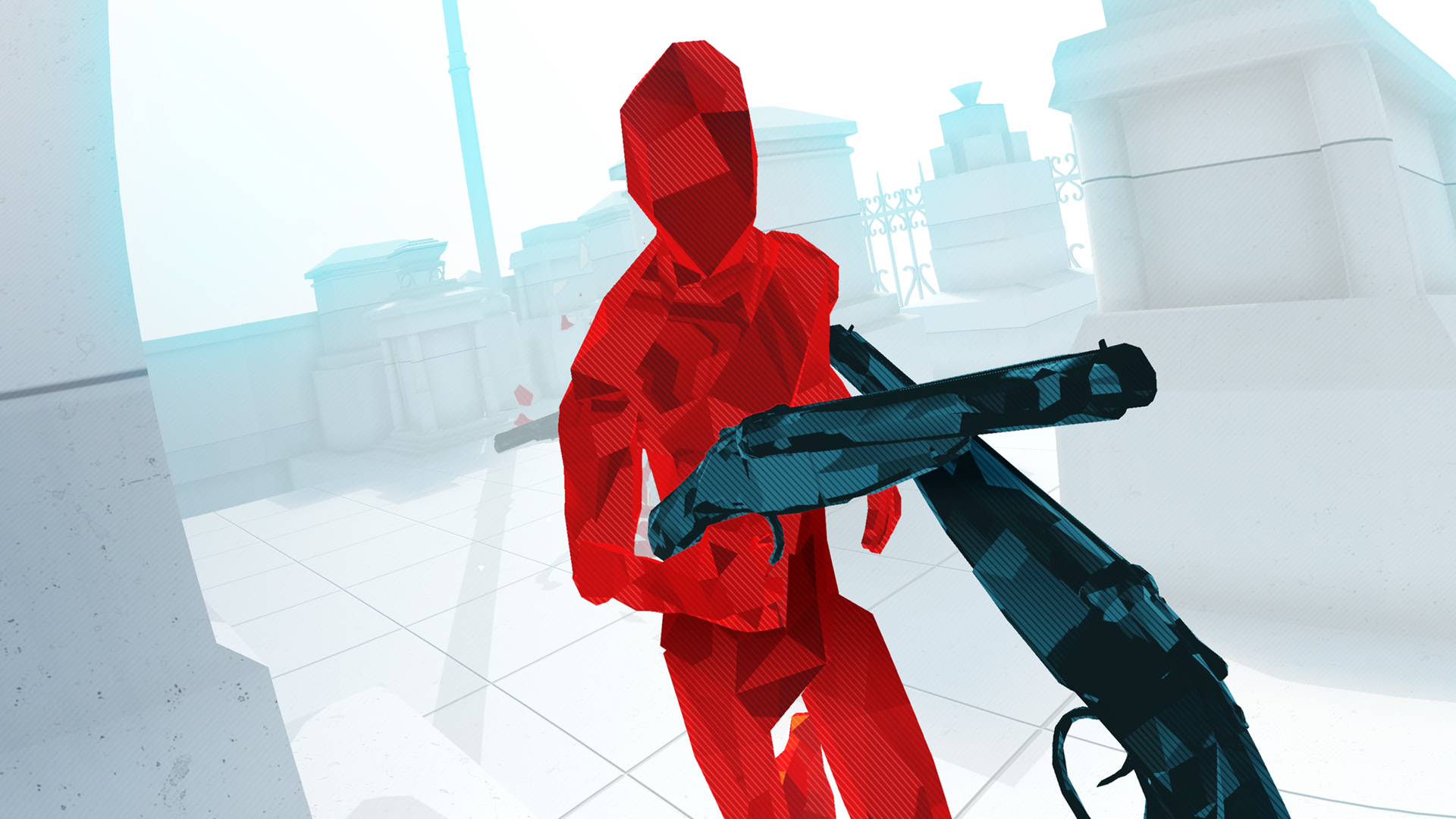
7. Superhot VR
The original Superhot was a wickedly stylish shooter with the gimmick that time only moves when you do. Stand still in the game and bullets will hang almost motionless in the air. The moment you move or fire your weapon, however, time kicks up again, speeding up to regular pace if you keep up your momentum.
What results is an incredible blend of FPS and spatial puzzling that is more than worthy of a place on this list. About a year later, however, the developers released a new, VR-specific version of the game, and it takes the concept to a whole new level.
Superhot VR is essentially a playable version of the bullet-dodging scene in The Matrix, only extended over several hours. During play you have to physically lean, duck, and twist your body to hide behind cover and avoid incoming projectiles. Meanwhile, guns have to be physically grabbed, lifted, and aimed, while knives and other throwing weapons can be hurled at opponents with a swing of your arm.
It’s a truly transformative shooter experience, and still one of the best VR experiences available. The only problem with it is that it is very short, which is a shame as you’ll quite happily play until you’ve tied yourself in a knot.
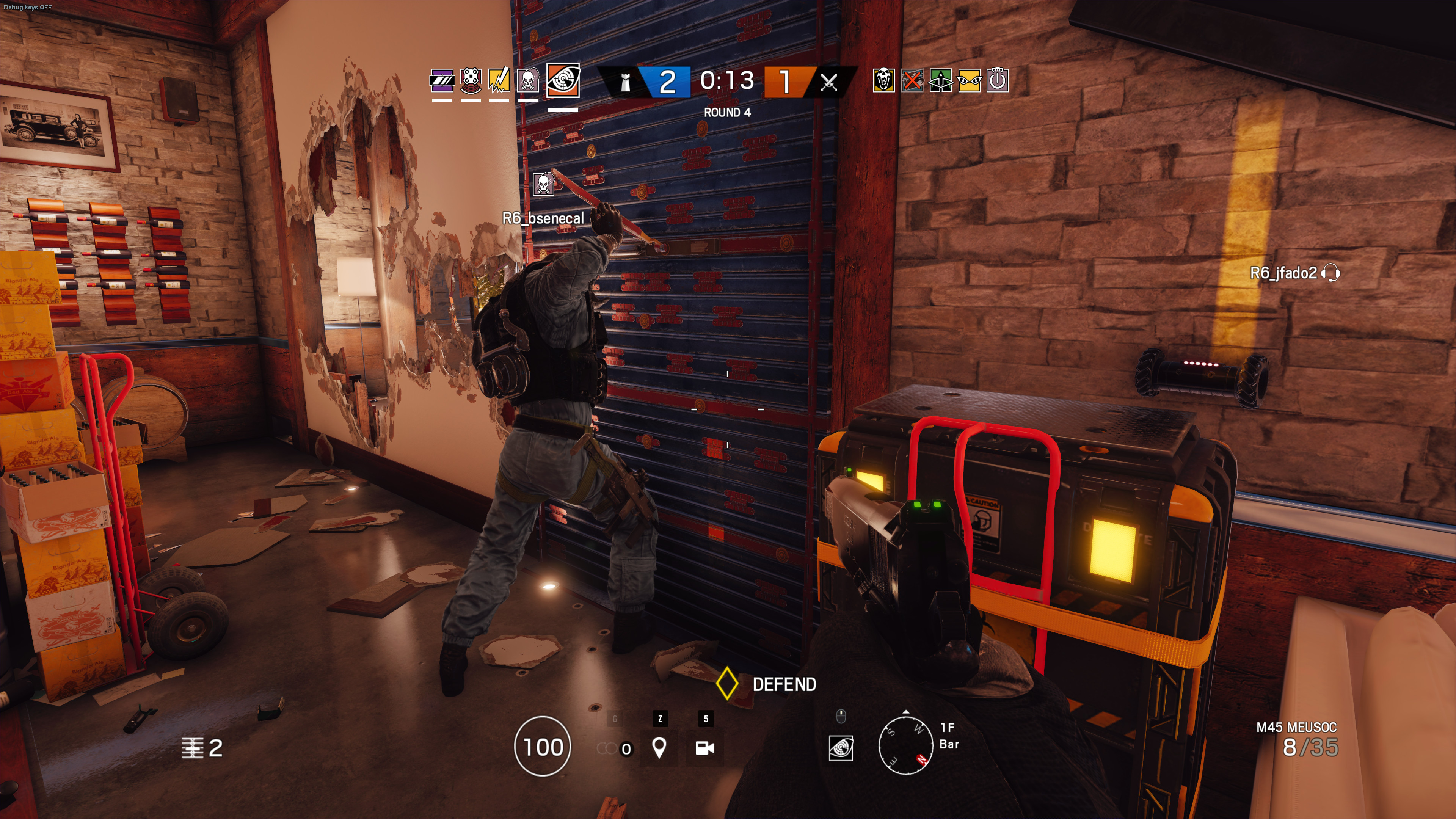
6. Rainbow Six: Siege
Shooters have increasingly shifted toward multiplayer in the last ten years, with games like Call of Duty, Battlefield, Overwatch and Fortnite each becoming massively successful in their own right. Despite their huge popularity, however, these games have done little to push the genre forward in the last decade.
A more distinctive multiplayer FPS experience can be found with Rainbow Six: Siege. Although a Rainbow Six game in name, in practice Siege plays out like a hybrid between SWAT 4 and Counter-Strike. Two teams of five players assume the role of terrorist and counter-terrorist. The former must barricade themselves inside a building, using various types of equipment like wall reinforcements and deployable shields to establish a defensive perimeter. The latter, meanwhile, need to assault that defended position, scouting out the area with drones and mini-robots, before breaching and clearing rooms with guns, explosives, and other equipment.
What results is a tense and thrilling game of cat-and-mouse as both sides attempt to out-think and outmanoeuvre one another. As a defender, you’re desperately trying to cover every angle, listening out for telltale sounds that signify an impending assault. As the attacker, you need to move slowly and methodically through the building, striking at just the right moment to catch the defenders on the wrong foot and wipe them out before they can respond.
Siege has come a long way in the years since its release, as has its player-base, which can make getting into the game something of a daunting task. It is genuinely worth trying, however, because the resulting experience is unlike any other shooter currently available.

5. Far Cry 3
There are quite a few Far Cry games to choose from now, but Far Cry 3 still provides just the right blend of open-world exploration and emergent gunplay that the series has become known for.
Far Cry 3 basically takes all the clever ideas Clint Hocking came up with when developing Far Cry 2, and then refines them while filtering out all the bad ideas that went along with them. The checkpoints you must clear while exploring are larger and more elaborate but don’t constantly respawn guards, while the wildlife simulation introduces predators to the wilderness, making combat a more interesting prospect as a leopard or a tiger suddenly leaps into the middle of a gunfight.
The game’s tropical island setting still looks beautiful six years on, and while the story can be a little bit irritating thanks to the party-boy protagonist and his dipshit friends, it makes up for this through some enjoyable mission design and plenty of explosive action. It’s also a game in which you get to set fire to an entire marijuana field. What’s not to like?
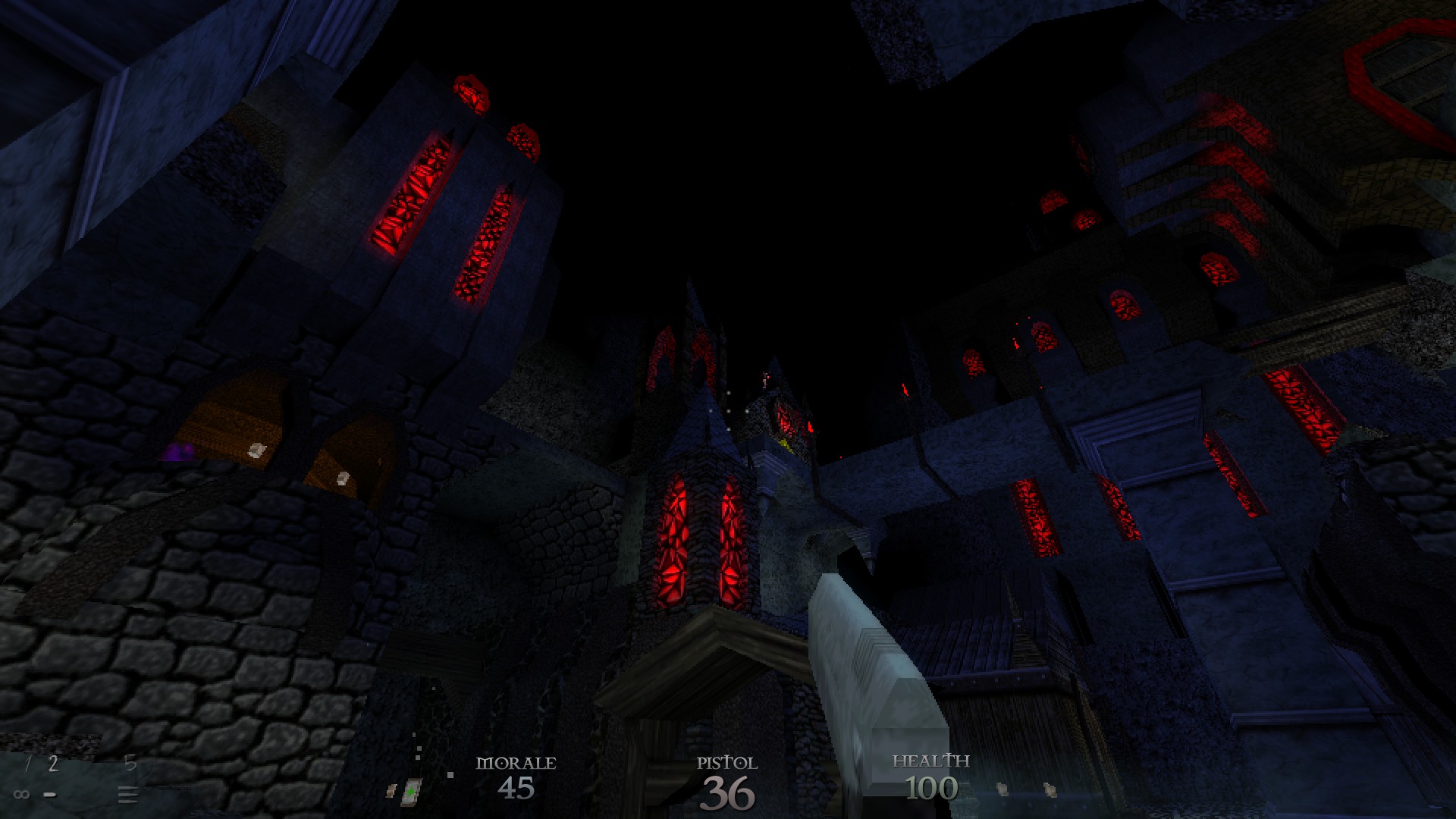
4. Dusk
The best 90s shooter that didn’t release in the 90s, Dusk is less an homage to classic FPS design and more like a vision into an alternate future in which graphics cards never evolved beyond the Voodoo 2. Not that it doesn’t pay its respects to the games which inspired it. The first of Dusk’s three episodes could easily have been ripped from any mid-to-late 90s shooter, a grim and gory gunfest through a moody expanse of backwoods populated by chainsaw-wielding maniacs and KKK-robe wearing wizards.
In its second and third acts, however, Dusk transcends the games it imitates, taking the player on a dazzling and surreal journey through some of the most incredible 3D level design created this side of Quake. Levels such as Escher Labs and Erebus reactor play with 3D space in truly mind-bending ways, while in the latter stages Dusk begins to deliberately unravel its own design ideas in fiendishly clever ways.
It also happens to be a cracking shooter too, featuring a sniper rifle that cracks like a bullwhip in a barn, and the most satisfying double-barrelled shotgun since Doom. It’s a must-play for anyone even who understands the word “gibs”, and if you don’t, well, it’s time for an education.
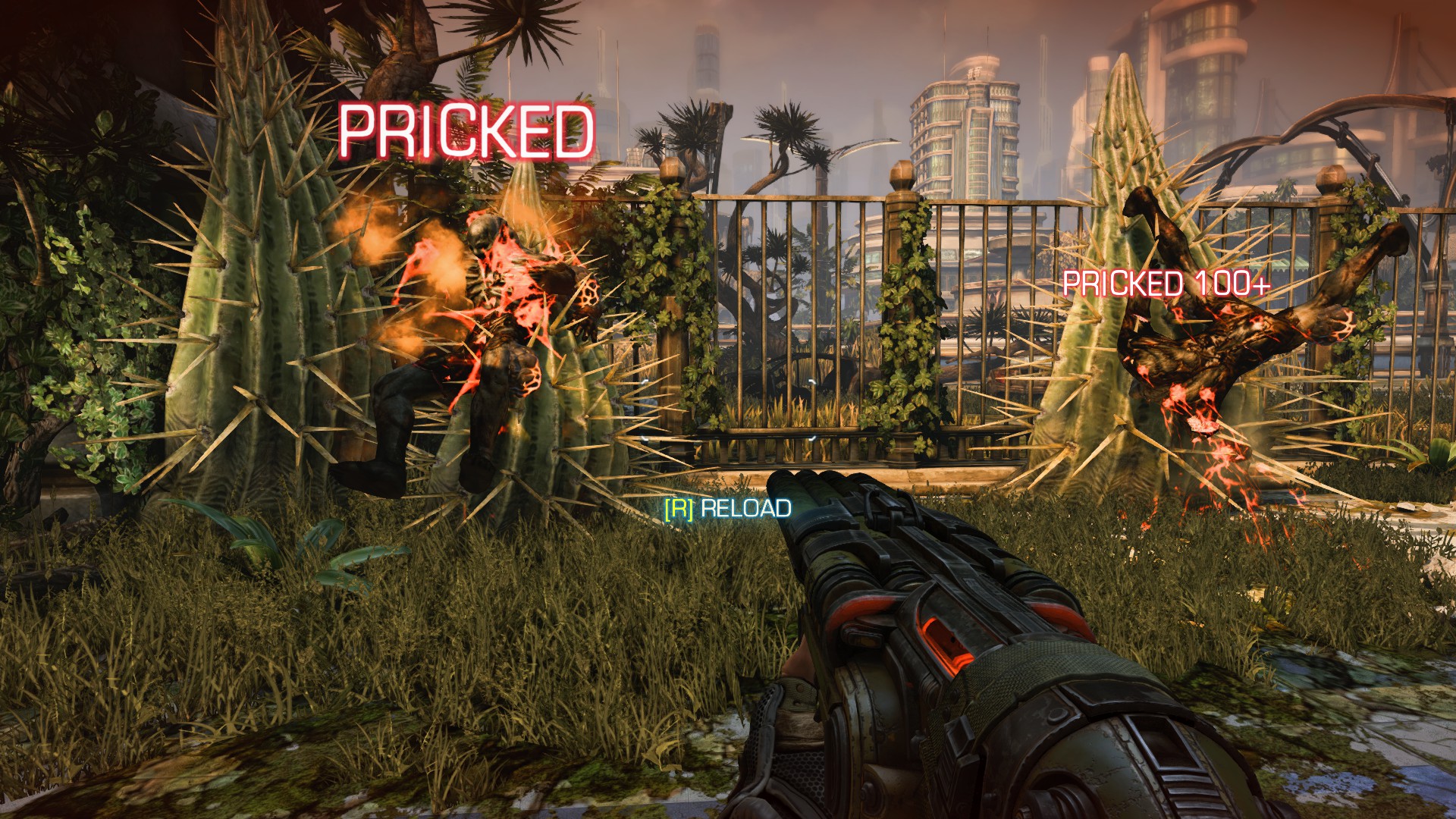
3. Bulletstorm
Somehow Bulletstorm is only the second-most tragically overlooked game on this list. People Can Fly’s explosively crass FPS only sold a few hundred thousand copies when it launched in 2011. This was largely down to its loudmouth, in-your-face style that includes more gratuitous violence and toilet humour than a South Park box-set.
It’s a massive shame, because underneath Bulletstorm’s playfully dumb exterior is one of the cleverest shooters in years. Set on an alien holiday resort overrun by mutants, Bulletstorm asks players not to just kill their enemies but kill them in style. Why shoot your opponent in the head, Bulletstorm asks, when you can wrap them in an exploding flail and then kick them into the maw of a man-eating plant, annihilating both foe and flora with a single press of the trigger.
What’s more, killing your enemies creatively earns you skill points that you can spend on upgrades for your weapons, letting you steer explosive bullets into your enemies with your sniper rifle, or skewer multiple opponents on a giant, spinning drillbit with the Driller gun.
Bulletstorm throws clever ideas at you like YouTube’s recommendation algorithm throws white-supremacist propaganda. It also features the best slide-kick in any shooter ever, and the ability to shoot some enemies in the bum. If that doesn’t sell you on it, I don’t know what will.
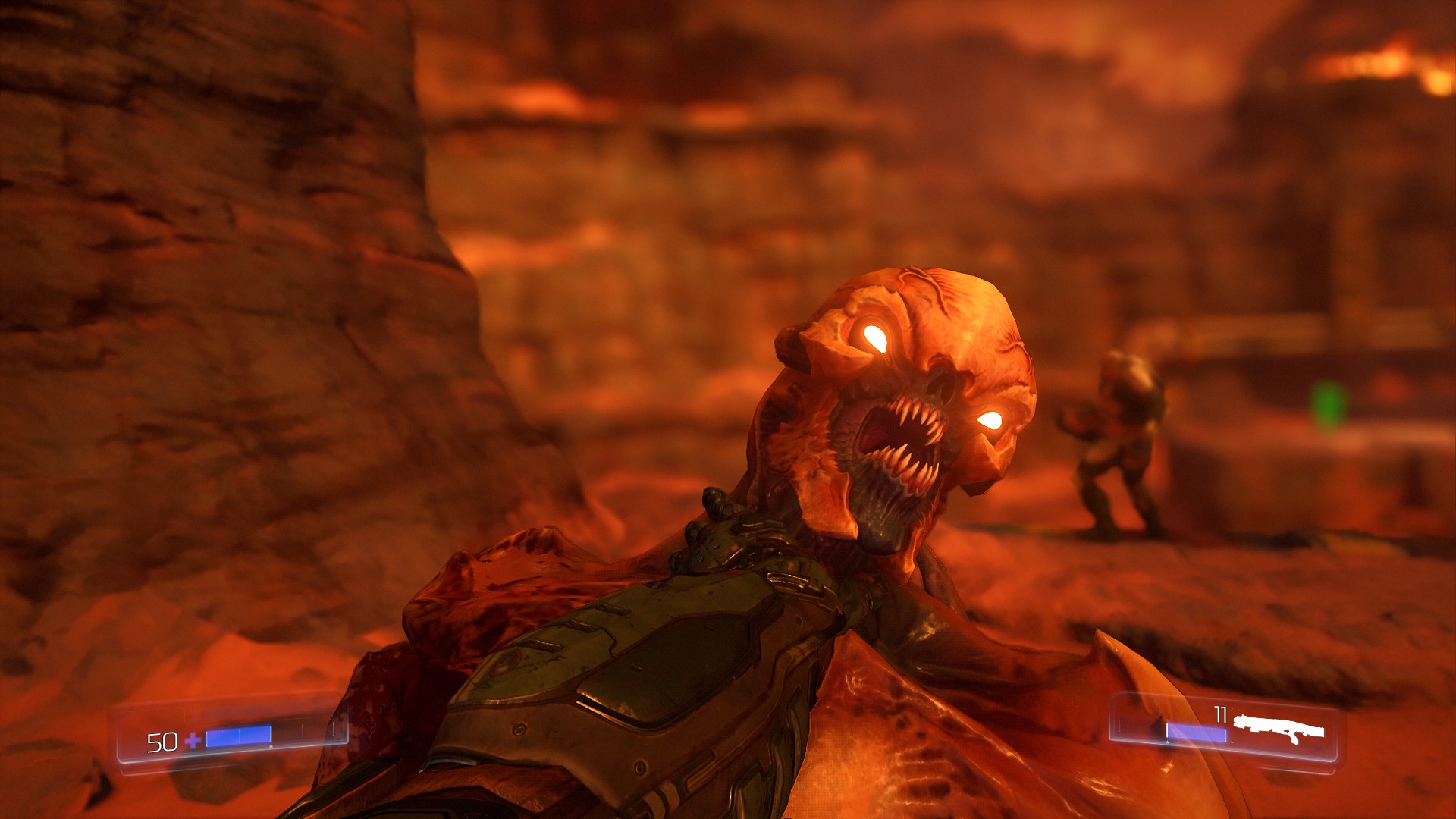
2. Doom
2016’s Doom reboot is often described as a return to the series’ roots, But that isn’t entirely accurate. Doom 2016 is more a manifestation of what everybody thinks the original Doom was like. 1993’s Doom wasn’t particularly fast, nor was it that intense. It was as much a survival horror as it was a shooter, only the term survival horror hadn’t been coined by that point.
This isn’t to disparage either game. 2016’s Doom is basically the game most people want Doom to be, and it does this absolutely brilliantly. From the moment the DoomGuy punches his way off the satanic altar he’s shackled to, Doom is a blistering and relentless onslaught through the UAC’s Martian base.
What makes Doom’s reboot so successful is how it enables you to be constantly on the move and constantly on the kill. The “glory kills” DoomGuy can perform are not just majestically over-the-top ways to end your opponent. Enemies finished this way also drop health and ammo, letting you maintain your momentum. Alongside this are beautiful hidden mechanics that maintain the tension, like the fact that the final 10 percent of your health-bar actually has the same weighting as the first 90 percent. This makes you feel like you’re always on the edge of death yet somehow emerging from battles victorious despite the odds.
Doom also deserves credit for its wickedly clever enemy and weapon redesigns. Transforming the Imp into a nimble, scuttling little git who scampers up walls and flings fireballs at you makes for a fantastic reimagining. Similarly ingenious are the tweaks to weapons, letting players upgrade them with optional alt-fire modes. The mini-rockets attached to your machine-gun are particularly satisfying, pricking your enemies' skin in a dozen different places before turning them into charred mincemeat moments later.
Doom’s only problem is that it is slightly overlong, or at least, the intensity and upgrades don’t keep up with the game’s length. But that doesn’t stop it from being an absolutely joyous shooter, and easily the best Doom since, well, Doom.
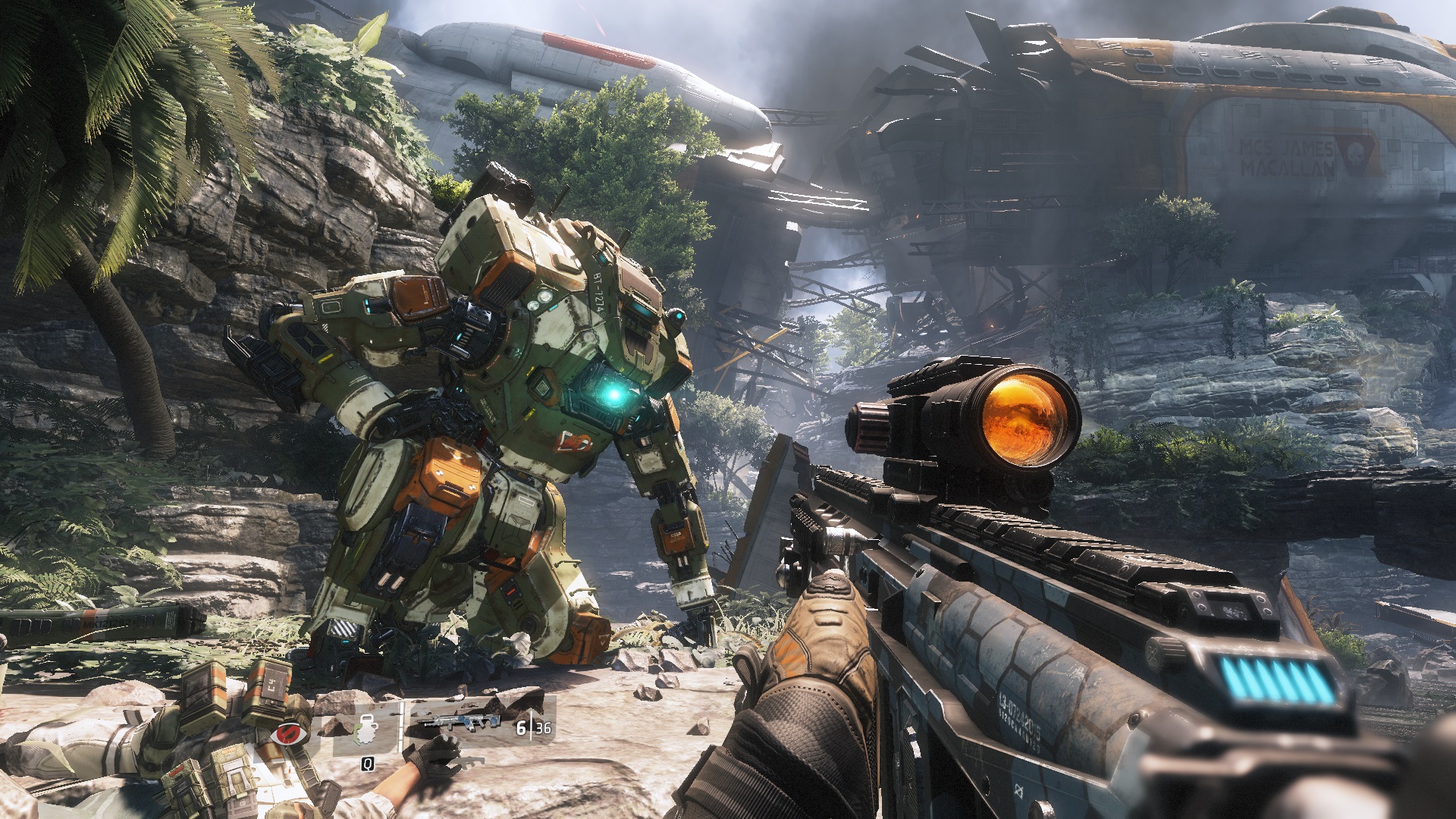
1. Titanfall 2
There’s no question in my mind that Titanfall 2 is the best shooter of the last 10 years. Heck, it’s probably the best FPS since Half-Life 2. It’s a game that features so many clever ideas that it barely has time to explore one before moving onto another.
In fact, there’s so much to discuss about this game that I’m dedicating a whole other article to telling you why it is great. For now, though, let me say that Titanfall 2 was criminally overlooked at launch, selling only a handful of copies in a crush between 2016’s iterations of Battlefield and Call of Duty. Currently, you can pick it up for a measly six pounds on Origin, while its multiplayer is enjoying something of a resurgence thanks to the success of Apex Legends. If you haven’t played it before, I recommend that you pick it up now, go in blind, and play the 5-6 hour campaign.
Then come back here, and I’ll talk about why it’s so great, while you thank me for guiding you towards such a brilliant, rewarding shooter experience. Sound good? Great. Off you pop.

MSI MPG Velox 100R Chassis Review
October 14 2021 | 15:04









Want to comment? Please log in.